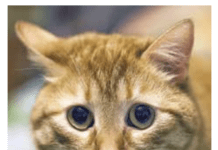It would be an understatement to say that Apollo, a spayed, 4-year-old Burmese, did not like the newest feline member in her house. Though she tolerated the other household cats just fine, when one of her feline clan died and a young, neutered male named Syd was subsequently introduced into the home, Apollo went ballistic.


According to her owner, Apollo would block Syds access to the litterbox, prevent him from eating food, stalk him as if he were prey, and get into daily scuffles that were dangerously escalating. Any attempts by Syd to initiate play with Apollo were met with a howling fight.
The owner was at wits end, relates Tracy Kroll, DVM, former resident in the Animal Behavior Clinic at the Cornell University College of Veterinary Medicine. Apollo was so aggressive, relates Kroll, the owner finally resorted to isolating him from the other two cats.
Cat-to-cat aggression
Cat-to-cat aggression seems to be prevalent in the multi-cat household, says Kroll, noting that since most owners cant own just one, multi-cat households are more common than single cat homes. Preventing cat-to-cat aggression can be difficult in the multi-cat household, acknowledges Kroll, because its inevitable that some cats wont get along. Its not like in the wild where cats can choose their relationships.
Much can be done to increase the odds of a successful addition, however, such as choosing altered cats of the opposite sex (males and females are less likely to squabble with each other than same-sex pairings), introducing a kitten or very young cat into an established feline home (the kitten is generally regarded as less of a threat than an adult cat), and being careful to select calm, tolerant temperaments.
Slow and careful introduction of the new cat can also help prevent some forms of aggression, as can efforts to remove potential perceived competition by providing multiple litter boxes and separate feeding areas.
When troubles occur in a multi-cat household despite all cautious efforts by the owner, the problem is often that the current feline population (or part of it) sees the new resident as a threat. Cats are more solitary by nature than other species (such as dogs, which are more pack oriented) so adding a family member can be more traumatic. The source of a cats aggression to a new cat can include fearfulness, territorial aggression, status-related factors (similar to dominance aggression in dogs), sexual aggression (i.e., the sparring of two intact males over a female), predatory attack behavior, and food aggression – to name some of the most common forms.
Without a doubt, introducing a new feline to the household can be difficult even under the best of circumstances; when cats are aggressive to other cats within the same household, it can get ugly. Cat fights are one of the most unpleasant experiences a cat owner can have, sympathizes Kroll. And, they can be dangerous. The aggression can be so severe as to force a desperate owner to do the unthinkable – give up the offending cat.
Finding a solution
In the past, multi-cat owners with a cat-to-cat aggression problem rarely sought help. They thought or expected their cats to show some levels of aggression toward each other, says Kroll. Now that more is known about feline behavior, owners are beginning to seek help for their cats abnormal behaviors.
Kroll is currently spearheading research into whether clomipramine, a trycyclic antidepressant, has any effect on controlling cat-to-cat aggression. Clomipramine (Clomicalm) is FDA-approved in humans and has been used successfully to control anxiety-related disorders such as obsessive-compulsive disorders. Clomipramine is also FDA-approved to treat separation anxiety in dogs.
The hope of the current feline study, supported by the Cornell Feline Health Center, is that this drug may prove to have similar effects in the cat and provide a ray of hope to multi-cat owners who are literally desperate to find a way to keep peace in the household.
How clomipramine actually works is not totally understood, but the drug has been shown to increase levels of serotonin in the brain. Serotonin is a neurotransmitter, which is a chemical messenger that transports molecules between nerve cells. In humans it has been found that sometimes a body may not produce enough serotonin or the molecules may be reabsorbed too quickly by the body, causing a serotonin deficiency that, in turn, can adversely affect a persons mood. If the rate of serotonin uptake can be regulated and the amount of serotonin maintained at normal levels, it is believed that a persons mood – or in the case of Krolls study, the aggressive responses of a cat – can be better controlled.
Monitoring behavior
The current study involves 20 highly aggressive cats. The felines in the study receive a daily dose for an eight-week period. (The dosage is weight dependant with most cats receiving 5 mg per day.) Criteria for the cats in the study include that the felines are altered, not on any medications, and free of any health conditions or diseases that might cause discomfort or pain. The cats also had to show cat-to-cat aggression at least three times a week.
Apollos owner and owners of other cats in the study are keeping daily diaries of their pets behavior and are providing progress reports on a weekly basis. If clomipramine is effective, the cats are anticipated to show a decrease in aggressive behaviors and an increase in affiliated behaviors, or non-aggressive interactions such as sleeping together or playing with other cats in the households, says Kroll. The study is tracking potential side effects too.
Though its too early to tell conclusively whether clomipramine will work effectively to control cat-to-cat aggression in felines, the early results are very promising. At press time, roughly half the cats involved in the study had completed their medications for the study, so complete study results will not be available for some time. However, if the results continue to be good, it is hoped that clomipramine will give veterinarians another tool in the future to help multi-cat owners keep the peace among their feline packs.



